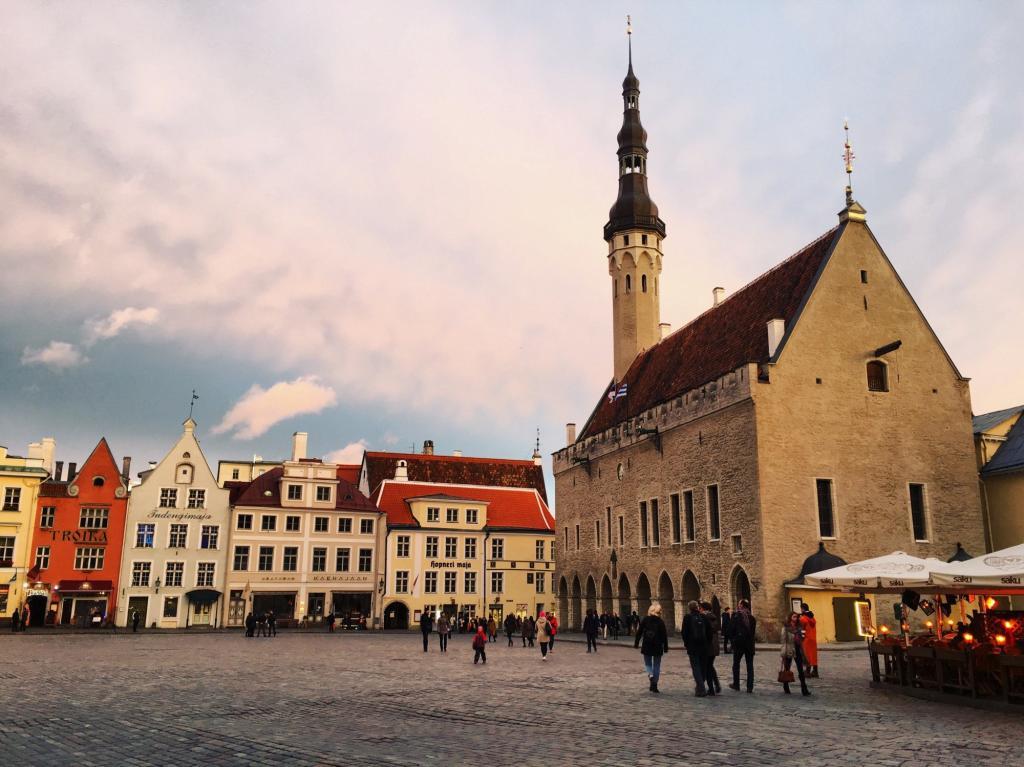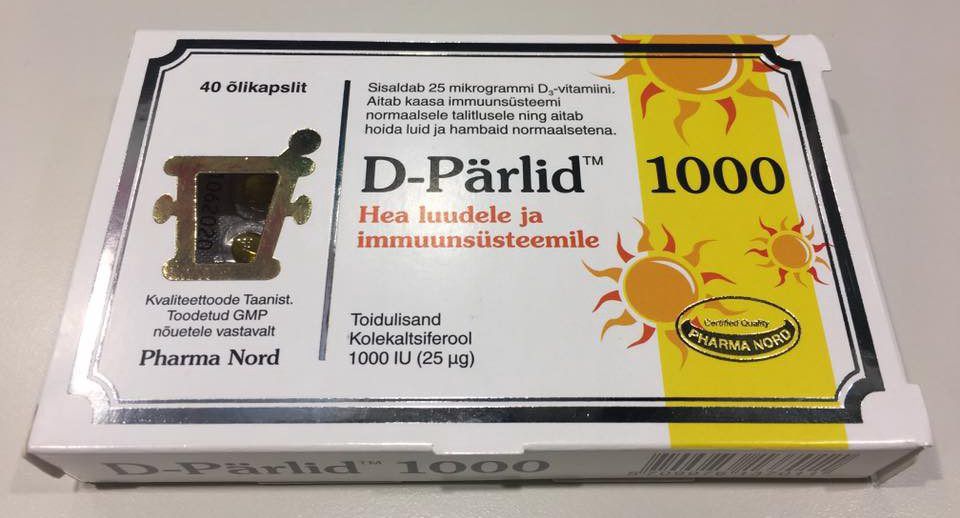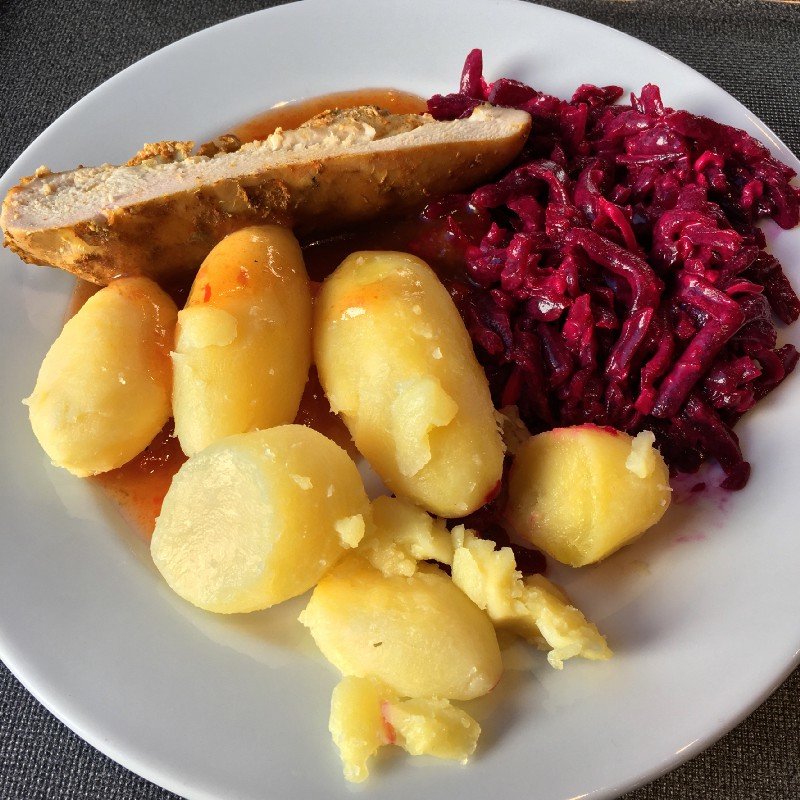About six months ago, American Alex Wellman packed his bags and moved to a small European country on the Baltic Sea called Estonia. Here is what he has learned so far.
1. Vitamin D is key
Since I’ve spent the majority of my life living in the Upper Peninsula of Michigan, I’m no stranger to snow and bitter cold. Before leaving for Estonia, I blew the dust off my heavy winter jacket, a casualty of living in Washington, DC, for the past four years, grabbed my fashionable (now practical) L.L. Bean duck boots, and made sure to remember my practical (but, according to my wife, never fashionable) Stormy Kromer (a type of cap – editor).
What I wasn’t prepared for was the elusiveness of the sun at the 59th parallel during the winter months. When it makes its brief, albeit still daily, appearance, it’s too idle to rise above most buildings and almost always hidden behind a thick, grey wall of clouds.
The weak rays of the winter sun are insufficient for your skin to produce the essential amount of vitamin D. When domestic production of this bodily resource is limited, you must import it. There are two basic ways to do this: either consume an inordinate amount of fish (not difficult in Estonia) or take supplements.
My wife made the move to Estonia on 21 December, the shortest day of the year when the sun rises at 9:17 am and sets at 3:21 pm. Jet-lagged, she was at first skeptical that the sun, does, in fact, exist here, having slept through several rounds of daylight while adjusting to the seven-hour time difference. She quickly saw the necessity of the sunshine supplements I was taking daily.
2. Embrace root vegetables, meat and black rye bread
Let’s be honest: if you don’t enjoy these three foods, you would have a difficult time surviving in Estonia. Beet salad is a wholly underrated culinary experience, and the black rye bread offered with every meal has become a favourite.
The dairy section at the average Estonian supermarket is also a sight to behold. From small cheesecake-like bites called kohuke to a rich, Philadelphia cream cheesesque spread called Merevaik, Estonia’s dairy selection would tempt even the most devout vegan.
If you do get tired of the local cuisine, Tallinn offers all of the food choices you would expect in a European capital city, including a hole-in-the-wall Korean place that serves a pretty good bibimbap.
A final word of warning, Estonians will try to force all manner of canned and pickled fish on you, often in combination with vodka. Consume at your own risk.
3. Sauna
 In most parts of the world, a sauna is a luxury that people only encounter at spas or high-end fitness centers. In Estonia, and its neighbour to the north, Finland, saunas are a part of everyday life. While looking for an apartment, I narrowed my search to include only properties that had a private sauna. While this might sound extravagant, it didn’t limit my prospects very much.
In most parts of the world, a sauna is a luxury that people only encounter at spas or high-end fitness centers. In Estonia, and its neighbour to the north, Finland, saunas are a part of everyday life. While looking for an apartment, I narrowed my search to include only properties that had a private sauna. While this might sound extravagant, it didn’t limit my prospects very much.
Also, in the same way vitamin D supplements help support your physical wellbeing during the dark winter months, the steam of the sauna offers the equivalent treatment for your mental health. Having a sauna in our apartment has been a true joy, and I think I would have a difficult time going back to my pre-sauna lifestyle.
4. e-Estonia is real
While many Estonians get tired of talking about e-Estonia and their leadership in digital services, I can attest to how efficient things are. I filed my Estonian taxes in a matter of minutes, a stark contrast to the hours spent clicking through the confusing jungle of TurboTax (a US tax software – editor).
And – shameless plug – even if you don’t live in Estonia, you can access many of these same services by becoming an e-resident.
5. Eesti keel?
When I told my friends and family in the US that I was moving to Estonia, a few people asked me, in all seriousness, “Estonia? What do they speak there? Estonian?” They, of course, were surprised when I informed them that, yes, there is actually a language called Estonian, spoken in Estonia by over one million people.
 The Estonian language is part of a small family of languages called Finno-Urgic that also includes Finnish, Hungarian and a few minority languages like Livonian, of which the last native speaker died in 2013.
The Estonian language is part of a small family of languages called Finno-Urgic that also includes Finnish, Hungarian and a few minority languages like Livonian, of which the last native speaker died in 2013.
Because Estonian is unrelated to Indo-European languages like English or French, there are few cognates. For example, night is nacht in German, noche in Spanish, natt in Swedish, and öö in Estonian. Notice any difference?
The US Foreign Service Institute classifies Estonian in Category IV, which includes “languages with significant linguistic and/or cultural differences from English”, indicating that it would take 44 weeks (1,100 hours) to learn the language well enough to use it in daily life. On top of that, Estonian and Finnish are marked with an asterisk that says they are “usually more difficult than other languages in the same category”.
Before moving to Estonia, I took a few Finnish language classes, which have helped slightly with knowing a few similar words at the grocery store. I intend to learn more Estonian, but for the time being, everyone here speaks English well enough that it’s not a problem.
6. It’s good to get out of Tallinn
Tallinn is an extremely livable city that combines elements of clean and efficient Nordic capitals, commie block flats leftover from 50 years of Soviet occupation, and one of the largest medieval old towns in Europe. With its population of 404,000 people, Tallinn also finds a happy medium between bustling metropolis and sleepy provincial outpost that, for the most part, offers enough to do.
Despite my limited experience, I think it’s important to go outside of the capital to get a feel for the real Estonia. Since the country boasts more than 2,000 islands and roughly 50% of the territory is covered in forest, it’s not hard to find a reason to venture out.
I’m looking forward to spending more time exploring my new country during the next six months when abundant sunlight makes getting enough vitamin D the least of my concerns.
I
Cover: Tallinn City Hall, completed in 1404. Images courtesy of Alex Wellman and Estonian World. Please consider making a donation for the continuous improvement of our publication.






Kudos to Alex for avoiding the cliché topics typical of such pieces about wife-carrying contests, Estonian extroverts looking at the shoes of others, and what a funny word ‘terviseks’ is.
Couldn’t agree more, so glad someone’s highlighted the normal every day things to Estonians that are perhaps not so normal for other nations.
When Estonians drink, they say “Terviseks!”. That means “for your helth!”.
Estonia has switched since 1991 from Russian to English as its second language, making it a far easier place for a North American to visit and live in. I visited Tallinn for my first time ever last year, staying at a B +B right in the old city. When I ventured out after unpacking, I felt as if I were in the Epcot Estonian theme area.
The part on the technology was especially well noted. I;d have been suck had I not had my trusty i phone, charger and adaptor along.
What a silly thing to say. As if they have willingly used the Russian. Before the Russians occupied this beautiful country, before WWII, Estonia was the number one country in literacy and the economy as strong as in Denmark.
Good on you Alex. I’m from Northern Wisconsin, lived in Estonia 10 years, and found the warm weather of the Baltics refreshing. When you get back, lets take in the Estonia Church near Irma, Wisconsin and some of the groups cultural activities together.
Give me a shout and I will join you! If you want to venture south, we can all belly up to the bar at the Eesti Maja in Deerfield, IL.
Very cool article 🙂 Im glad you have managed to find all the best parts of living in Estonia.
I love that he’s from the U.P. and mentioned wearing Stormy Kromer!
I love that you’re a Yooper. I’m in Wisconsin–Milwaukee, specifically, and you could have come down here to learn Estonian from me and all my friends. There’s bunches. Congrats on your move to Eesti–we are not far behind.
Where are the Estonians in Milwaukee? ? I’ve been searching!
There are a few of us still around. There was a vibrant little community that settled here in the early 50s and had children. I’m one of the children. But the immigrant Estos have been dying off–only a couple left. We’re closely tied with the Chicago Estonians, and built the Estonian House in Deerfield. I grew up going there, but now I go and don’t recognize anyone. Our first generation Estos are older now– I have grandchildren! And most of the folks in Illinois are “new Estonians” –those that came after the Soviet Unuon broke up.
But anyway–my hubs and I are here in Greenfield. If you’d like to communicate or meet, my email is toni@tomntoni.com.
My father from Tallinn, lost his family in the Dresden massacre, 1945. Therefore, my child is without half a family. How can I pursue citizenship as a descendant?
Citizenship in Eesti? They do everything online, so I’m sure if you research a bit you’ll be able to get your dual citizenship. I think we’re automatically dual citizens because we’re first generation, but contact the Estonian Consulate to be sure.
Um, Tallinn isn’t the “real” Estonia?
Got a question for Alex. How did he get the job in the first place? The answer will be appreciated.
Same Question
10th month here and I beg to differ. To be honest I think this article is a little misleading.
First of all, winter is not that bad.
Yes the daylight is shorter, but come on let’s face it: even if you are in a more southern country, in the winter during the shortest daylight time, it’s still dark no matter if it’s 8am or 5pm, when you are either on your way to or from work. Unless you are in tropical regions, it doesn’t differ quite a lot.
Secondly, the food choices are wider than what’s being said in the article.
Yes there are less kinds of vegetables, but I guess still in the supermarket it’s enough for you to cook your daily homemade cuisine. Even if you don’t cook, there are definitely all kinds of restaurants for you to choose. The famous Chinese restaurant is just so-so, but for me, I like pizza and I found one that is really nice, agreed by my Italian friends too.
Language? English is not my native language either. I do can tell Estonian is quite different from English, but once you get to know it, it’s an elegant system. And it reads as it writes, which makes it easier to begin with. And it doesn’t have the complicated tense such as “I would have been doing something”. With all due respect, English is pretty fucked up too, LOL, though neither of them is as hard as Chinese.
Last but not least, if you are only in Tallinn, you are not really in Estonia. Because Estonia is not about small cities. It’s all about nature. It’s about going into the forest or to the lake side within 30min drive from any spot in this country.
Thank You.
Thanks for the great piece! I day dream about spending more time in Estonia. We were in Tallinn for a few weeks two years ago and it was so beautiful that I think about going back often. Of course, we live in Hawaii so the cold and dark would be tough.